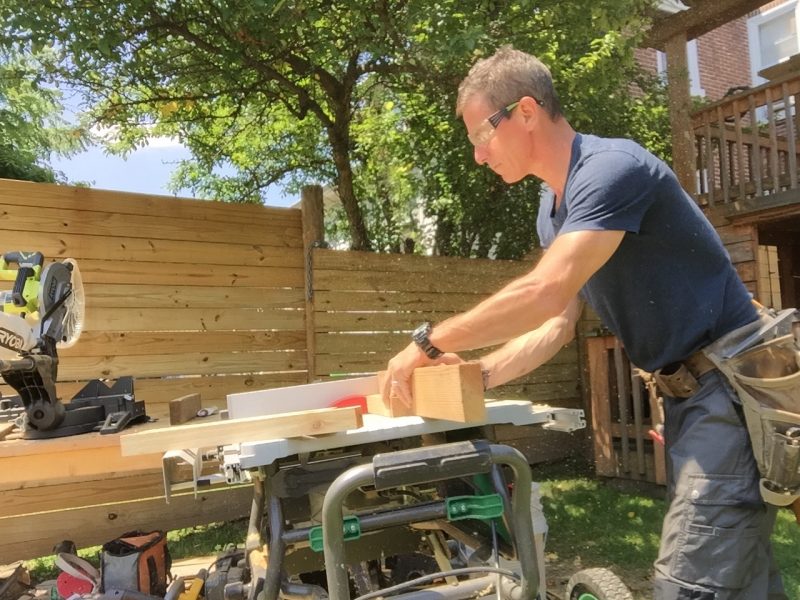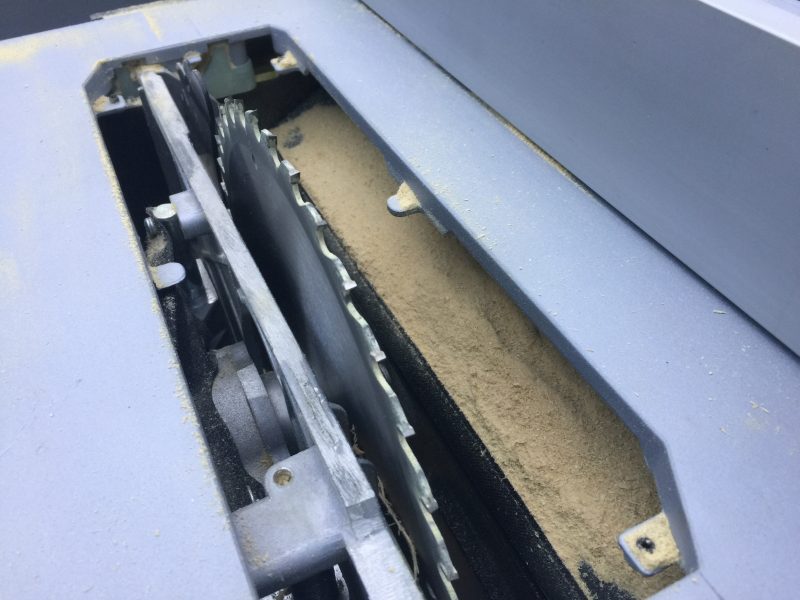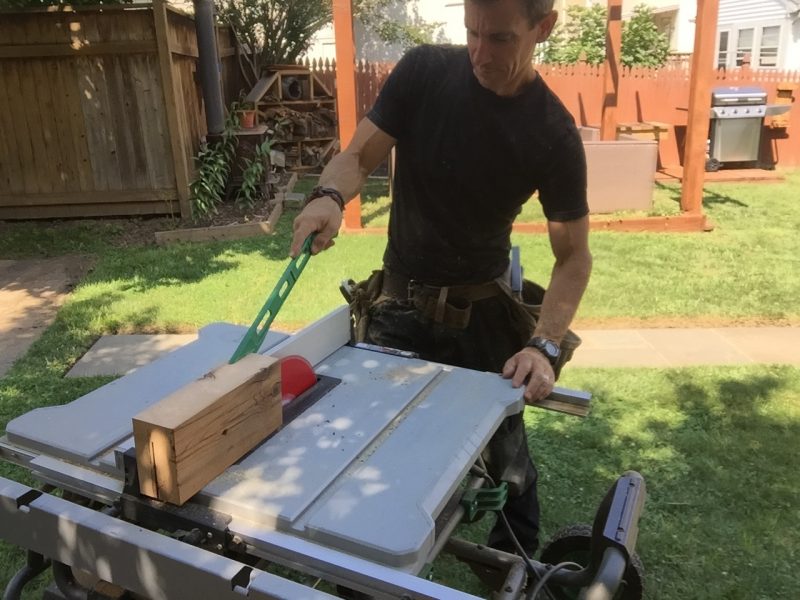I like the Hitachi table saw, model C10RJ. Excellent features combine to make a pro-level tool—also awesome for some DIY woodworking action—that can keep pace on the job site or in the shop. Now here’s some nitty and some gritty if you want it(ty).
Hitachi tools kind of slipped off my radar over the last few (10) years. They made some changes at the design level and the results weren’t the Hitachi I had known and loved. That seems to be in the rear view mirror and disappearing quickly. I’ve peeked a couple of their new items and I like what I see. We all have our moments.
The Hitachi table saw, C10RJ, might be the best example. The open-body style is compact, light (for a table saw with a stand) and still fully-featured.
The included, foldable 4-leg stand and wheel kit is well-designed—and a big contributor to the weight reduction. The typical collapsing style stands are heavy as hell and murderous to lug into the truck alone.
On this tool, you have to manipulate a bearing on each leg to fold them up, so technically its a little slower to set up, but that’s splitting hairs. I’d rather have it be easier to move by, like, a 1000%. And, I found the legs great for uneven terrain like grass (I set up table saws on deck and pergola sites). There is a threaded foot that can be adjusted for indoor use (like the workshop where it won’t move around too much. Also, if you don’t want to use the stand—or use your own—its easily unbolted from the saw.


The fence is sensational. The only other geared style fence I’ve seen other than DeWalt’s, it works great. It’s accurate and easy to adjust. I found the release lever easy to reach and use. It is also tall, which I like. It could totally be subjective but I feel like a beefy fence is a better fence. Out of the box, the fence was parallel to the blade. If it isn’t, adjustment is easy.
This Hitachi table saw also has—thank you!—and electric brake. I love, love, triple-love it. I’m not even going to say anything else. I love it. OK, I said something else.
Borrowing a feature from cabinet style saw, the on-switch is a button. It only took me about 3,000 tries to erase the muscle memory of pulling a paddle switch (which I’ve done about 3-million times) but once I figured out how to press a button, I like it. The off switch is a paddle you hit. Cool.
It has a 35-inch cut capacity, which is a lot. I’ll likely never use it, but it’s nice. Big panels are typically better handled by bigger saws or smaller saws (circ saws with guides).
The rest is pretty typical. Power is on par. I like the cord wrap on the side. The cord is short and stiff—that alone is more often than not a warning sign—but not here. There are zero times I don’t need an extension cord for my table saw, so a short cord doesn’t really matter.
Dust: I don’t know why table saws are designed with a forward-facing dust chute. They all clog. The Hitachi table saw is no exception, and actually clogs quickly. The chutes I’ve seen lately—and I have not seen them all—are contoured and have angular elements that gather dust. Why in the hell can’t it just pour out the bottom? You know, like with gravity. The Hitachi table saw has a screw-off side panel on their chute for clearing dust. I took it off hoping it’d relieve the clogging. It’s didn’t.


The throat plate is big and integrates flush with the saw deck. The 40-tooth blade that comes with the saw is nice too. Not always the case with other tools.
I like the effort at the outfeed support but feel like it’s kind of like my appendix: It’s there but I don’t use it. I’d like to use it but it doesn’t stick out far enough to support long rips (and if it did, it’d tip—I’ve seen that happen). So it just sits there not doing much while the rest of the saw tears it up impressively.
$479 — Worth it.


$479 — Worth it.
